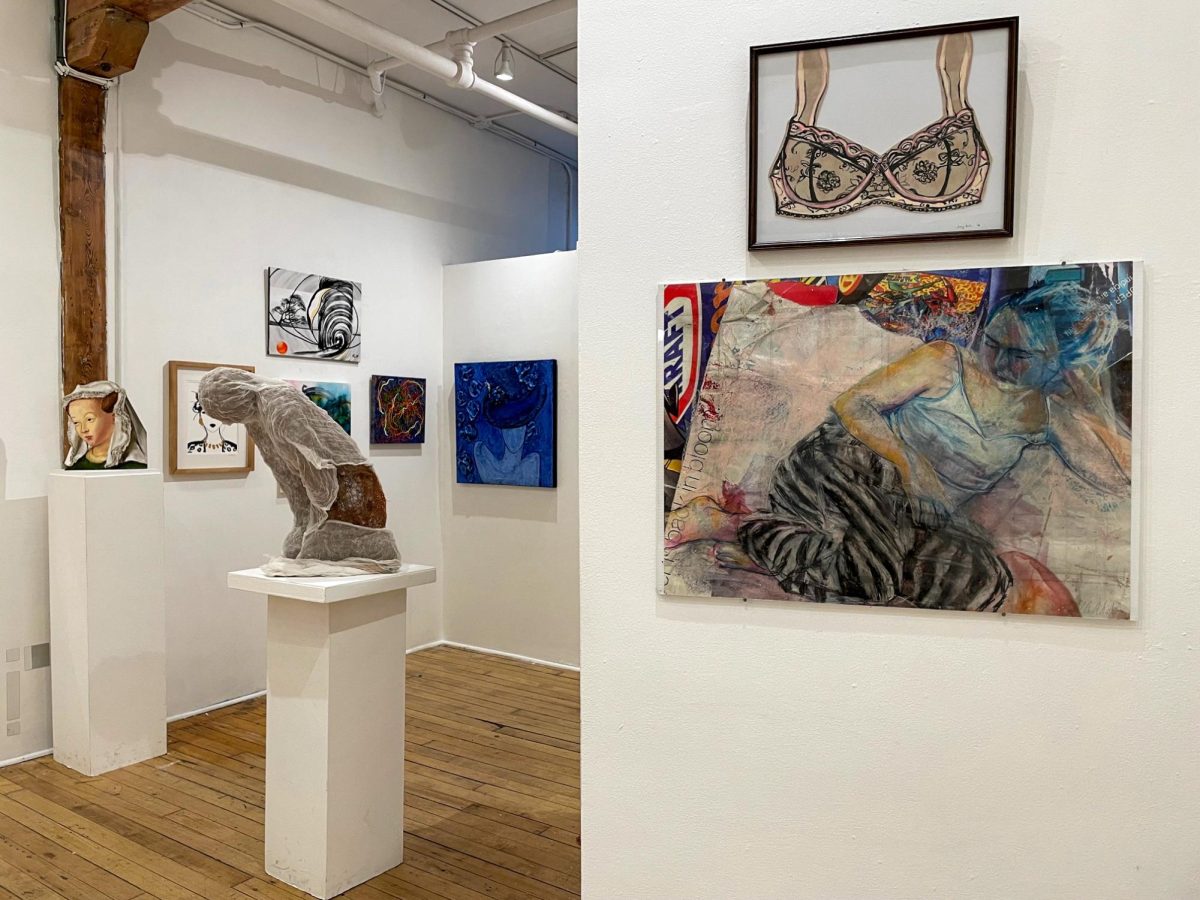Throughout history, a woman’s place in society has often been tethered to men. With the prerogative of redirecting this pattern, the “Herstory” exhibition at the Viridian Artists Inc. gallery in Chelsea alters the spelling of history, creating a new feminist narrative.
“Herstory” is an annual exhibition put on by Viridian Artists Inc. to celebrate Women’s History Month. Open until March 16, this year’s exhibition features artists including Jenny Belin, Renée Borkow, Matt Cohen and Sai Morikawa. With acrylic, oil, multimedia and photographic works, “Herstory” examines the triumphs, tribulations and perseverance of the female experience.
Artist May DeViney tackles one of these struggles in her piece “Ada Lovelace: The First Computer Programmer.” DeViney sheds light on how accomplishments of women have often been obscured by male figures or ignored altogether by taking Lovelace as an example, whose pioneering work in computer programming — which led to the invention of the first analytical engine — is mistakenly credited to Charles Babbage.
The focal point of the piece, which consists of acrylic paint collaged with paper and fabric, is Lovelace, adorned with a headpiece, ivory gloves and a scarf. The fabric of her dress is covered in ones and zeros to represent her pioneering the first written algorithm run by a computing machine. Surrounding her are cutouts of 19th-century technological innovations — like the first analytical engine — juxtaposed with modern advancements, such as the first computer or coding terminal.
Women’s apparel continues to be a defining aspect of femininity in “Herstory,” such as in the leather and ink piece “Make Your Bust Line Your Best Line” by Jenny Belin — who consistently challenges beauty standards within her art.
The focus of the art is a bra traced with lines of blush pink, a bow and black florals. In opposition to how women have historically been quantified by their sex appeal, the bra instead intends to empower women through dainty flowers and embroidered roses. It signifies beauty instead of serving the male gaze.
The exhibit continues to rewrite history through artist Matt Cohen’s abstract 3D multimedia collage “After Goya, Majas on the Balcony,” a sequel to the famous artwork by Spanish artist Francisco Goya. Goya’s original iconic painting features two women at its center dressed in bright, elegant gowns with two men staring behind them. In his piece, Cohen depicts how he perceives the moments following Goya’s scene.
The foreground of Cohen’s piece starts with barbed wire that blurs the faces of the figures behind it. Sketched black portraits are scattered across the work in different textures, with shades of magenta and rose in the background. The drawn silhouettes of women are unfinished, their curves and figures accentuated with an empty space where their face should be.
In the bottom left corner, the face of a woman is hidden behind layers of barbed wire and painted in a darker shade of red. She is looking upward, in the direction of the faceless silhouettes, with a scornful look on her face. Next to Cohen’s piece is an excerpt from John Berger’s famous essays, “Ways of Seeing,” which reads, “Men look at women. Women watch themselves being looked at.” The excerpt and artwork depict this exchange through the artists’ lens.
“Herstory” acknowledges the struggles of women both in modernity and history. To celebrate the female figures of the past and present, “The Power Quilt” by Elizabeth Ginsberg is sewn with names like Stacy Abrams, Sacagawea and Cleopatra VII. This piece, as a segment of the broader exhibition, is a commemoration of women’s achievements.
The exhibition vividly reimagines feminist history while serving as a call to action to reflect on and correct our past mistakes. As visitors explore the exhibition, they are confronted with the omnipresence of male influence in women’s lives, prompting a discussion about the ongoing fight for gender equity.
























































































































































Adelle • Mar 6, 2024 at 12:25 pm
Amazing intelligent self-reflective women writing about amazing intelligent self-reflective art!!!